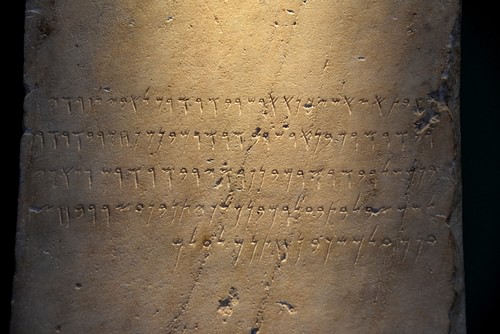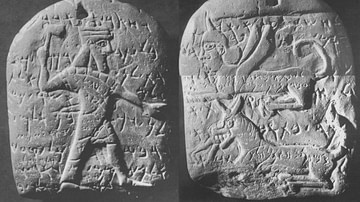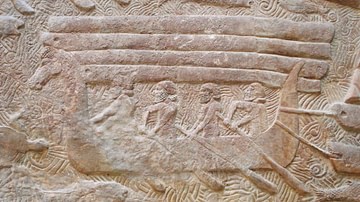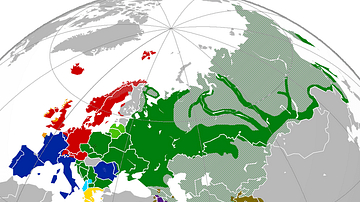Phoenician is a Canaanite language closely related to Hebrew. Very little is known about the Canaanite language, except what can be gathered from the El-Amarna letters written by Canaanite kings to Pharaohs Amenhopis III (1402 - 1364 BCE) and Akhenaton (1364 - 1347 BCE). It appears that the Phoenician language, culture, and writing were strongly influenced by Egypt (which controlled Phoenicia for a long time), as king Rib-Adda of Byblos admits in one of his letters to the pharaoh.

Egyptian & Cuneiform Influence
Our knowledge of the Phoenician language is based on the few extant written texts in Phoenician. Before circa 1000 BCE Phoenician was written using cuneiform symbols that were common across Mesopotamia. The first signs of the Phoenician alphabet found at Byblos are clearly derived from Egyptian hieroglyphics, and not from cuneiform. The 22 Phoenician letters are simplifications of Egyptian hieroglyphic symbols, which took on a standardized form at the end of the 12th century BCE. Like Hebrew and Arabic, Phoenician was written from right to left, and vowels were omitted (which makes deciphering Phoenician even harder).
Similarities to Hebrew
By 1000 BCE the Phoenician and Hebrew languages had become distinct from Aramaic, which was spoken in Canaan. To give a few examples, the "ha-" prefix is used in both Phoenician and Hebrew to indicate a determinate noun, while in Aramaic the "-a" suffix is used. The pronoun for the first person is "ānōkī" while in Aramaic it is "anā" (as it is in modern Arabic). The word for "son" is "bar" in Aramaic but "ben" is Phoenician and Hebrew. Nonetheless there are differences between Hebrew and Phoenician: The verbs for "to be" and "to do" differ and the long "a" sound in Hebrew is pronounced "o" in Phoenician, for example.
Evolution
The Phoenician writing system is, by virtue of being an alphabet, simple and easy to learn, and also very adaptable to other languages, quite unlike cuneiform or hieroglyphics. In the 9th century BCE the Aramaeans had adopted the Phoenician alphabet, added symbols for the initial "aleph" and for long vowels. This Aramaic alphabet eventually turned into modern Arabic. By the 8th century BCE, texts written in the Phoenician alphabet whose authors were probably not Phoenician appeared in Cilicia in southern Asia Minor and in northern Syria. Eventually the Greeks, who were in close trading contact with the Levant, adopted the Phoenician alphabet, added vowel sounds, and thus created the Greek alphabet (upon which our modern Latin alphabet is based).





